Churches are often important wildlife habitats. There are good reasons for this. Ancient church buildings have all sorts of places through which animals can find a way in, such as gaps under doors or belfry windows. Unlike modern houses or offices, they were never built to be sealed to the outside world. Within, they have large areas which animals can inhabit undisturbed, such as roof structures high above the floor, or rooms in the bell tower. Indeed, a rural church which is used for, say, only a couple of services each month forms an ideal refuge for wildlife.
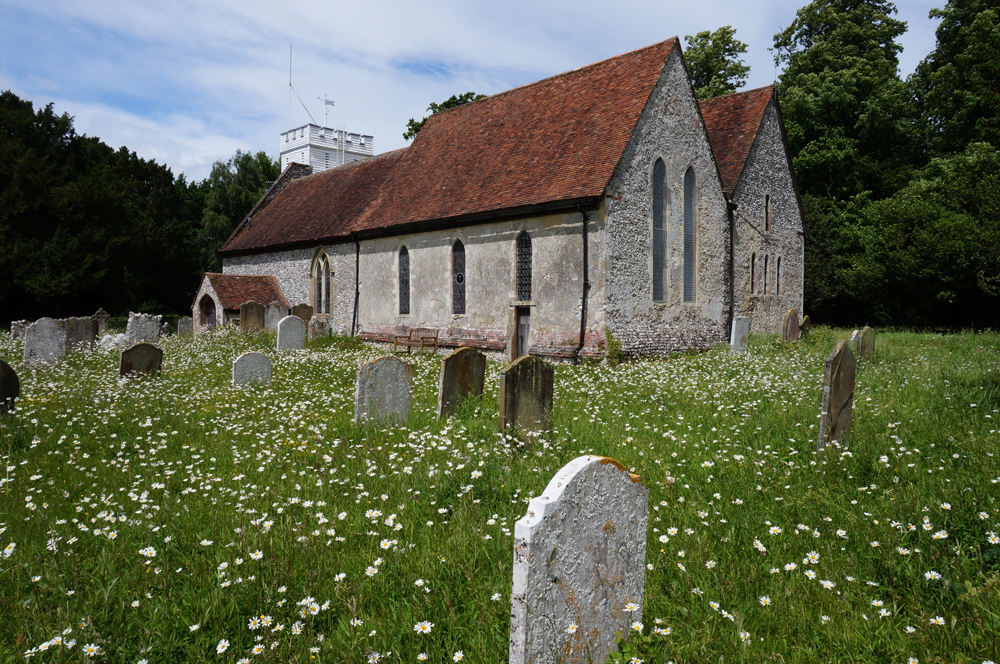
The Church of the Beheading of St John the Baptist in Doddington is located in the Kent Downs Area of Outstanding Natural Beauty. The churchyard, which is still open for burials, is maintained as a wildlife habitat and the grass is allowed to grow long. In late spring it is full of oxeye daisies.
Throughout history, churchyards were always green spaces. It’s possible that some of them were hallowed sites even before the church buildings that they contain were built. The Diocese of Canterbury’s heritage of yew trees, some of them of great antiquity, testifies to this. Industrialisation, and the economic growth that it brought from the 19th century onwards, increased the importance of churchyards as habitats for wildlife. In a built-up urban area, a churchyard may be the only extensive green space for miles around. In the countryside, modern farming techniques with the use of pesticides and herbicides have created areas of monoculture, where only a crop being grown commercially is intended to thrive.
A churchyard may therefore be one the few places in your neighbourhood to retain biodiversity. Historic man-made objects contribute to that – gravestones often provide habitats for lichen, for example, and historic churchyard boundary walls can have an ecology all of their own. Though individual churchyards may be small, together they make up a large area – the sum total of all of those in England and Wales has been estimated as roughly equal to Exmoor or the Isle of Wight. In other words, they effectively constitute a national park. Making your church and churchyard a good wildlife habitat doesn’t necessarily require great sacrifices. For instance, you can set aside areas of it to be left unmowed.
We understand that maintenance of churchyards even at a basic level can sometimes be very labour intensive and difficult to sustain. But take heart – because of the importance that so many churchyards hold for the wider community, it’s often possible to recruit volunteers to assist. One way of doing this is to set up a friends’ group for your church.
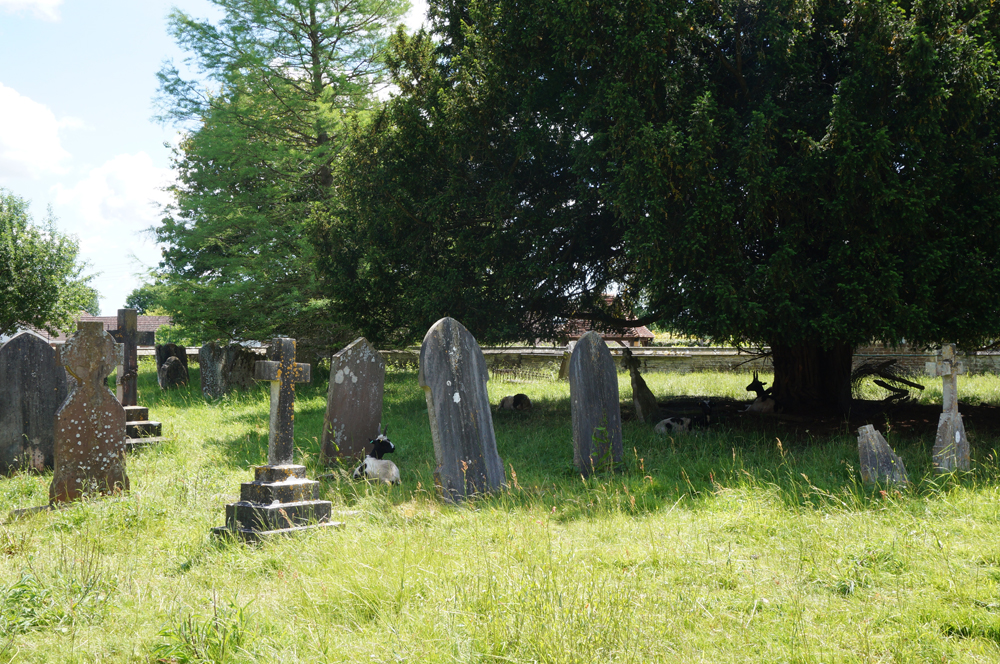
At St Mary’s in Frittenden, goats are used to keep down grass and other vegetation in the churchyard.
You, nature and the law
It’s vital for church communities to live in harmony with the ecology of their building and its churchyard. We don’t expect you to put up with encroachment of the natural world where it’s causing a nuisance – in fact, we positively encourage you to tackle it. Mend broken panes of glass which are letting birds fly in and make a mess. Fit belfry windows with chicken wire so pigeons can’t get in and build nests. Kill ivy and other creepers that are growing up the walls of your building (there’s no need to use herbicides – simply cut off the plant at the root and wait for it to die) and remove them, since they can cause damage to fabric. Clear out plant growth from ground and roof gutters, which have an important job to do keeping your building dry.
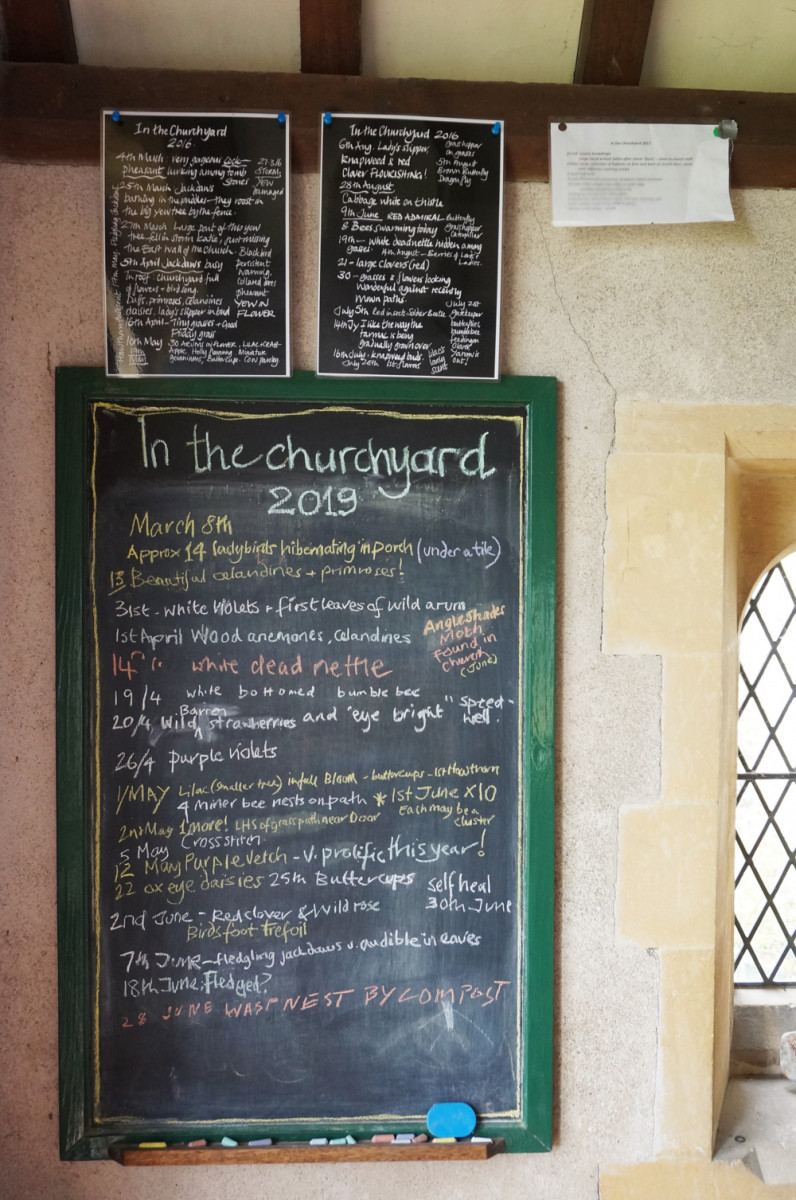
At St Laurence’s in Leaveland, wildlife observed in the churchyard is recorded on a chalk board inside the porch.
Though many churchyard trees are protected with individual tree protection orders or by virtue of falling within conservation areas, there may also be times when they are a hindrance. A tree may be exacerbating structural movement and need reduction or even removal. Trees sometimes die and become dangerous. You may also want to reduce the crown of a tree to improve visibility in a churchyard and to discourage antisocial behaviour. If your churchyard or the grounds of your church have been consecrated, then works to trees will be subject to the faculty jurisdiction. Many of these fall under Lists A and B, although the complete removal of a living tree is always a full faculty matter. If you need further guidance, contact the Care of Churches office. Many works to trees are subject to secular planning controls. Contact the tree officer at your local council for advice if you’re unsure where you stand.
Bats and protected species
Some species of wildlife to be found in churchyards are protected by law, such as dormice and great crested newts. Those which you’re most likely to encounter are the various species of bats, which are usually found in the roof space, but are sometimes found in other areas. Many churches have bat roosts, even colonies. Some quinquennial inspection reports include information about them, although the situation isn’t constant or predictable – bats come and go of their own accord. Be vigilant – bats may be present even if there are no obvious signs of their presence, such as bat droppings.
It is illegal to kill, injure or disturb individual bats or to obstruct access to, damage or disturb their roosts. This can have major implications if you need to carry out building work. In this context, ‘damage’ would include operations such as using chemical wood preservative to treat rot or beetle infestations in that part of the building. ‘Disturbance’ includes any work at all in or affecting a bat roost. Having bats in your church doesn’t mean that you can’t carry out repairs and alterations, but it does mean that you need to time any building work carefully to avoid causing them harm. The table below explains what is possible and when.
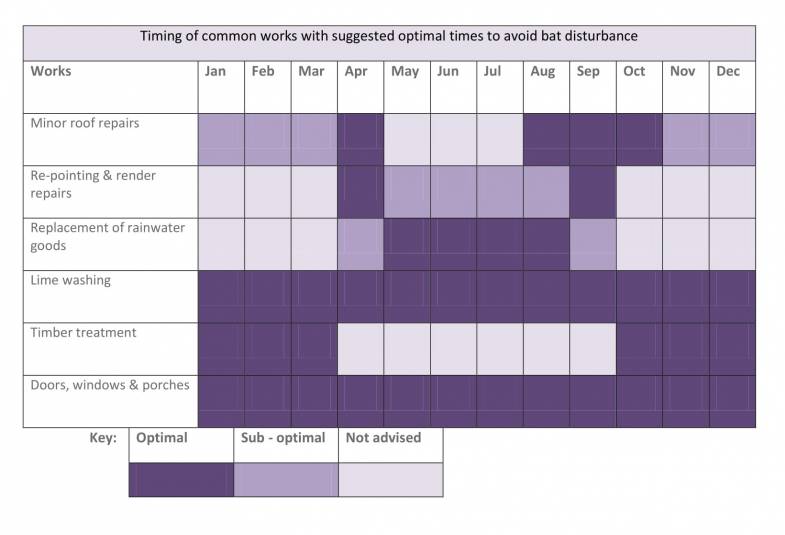
You can find more detailed guidance from Historic England on planning building works in a church where bats are present here. If you have any queries, contact Natural England or Bat Conservation Trust for advice. When building work is being carried out to the church, the contractor must be made aware that bats may be present. If building work has already started when bats are discovered, you must stop work and contact Natural England for advice before it can be resumed. Conservation architects and contractors are usually familiar with bats and the constraints to bear in mind when working at buildings while they might be present.
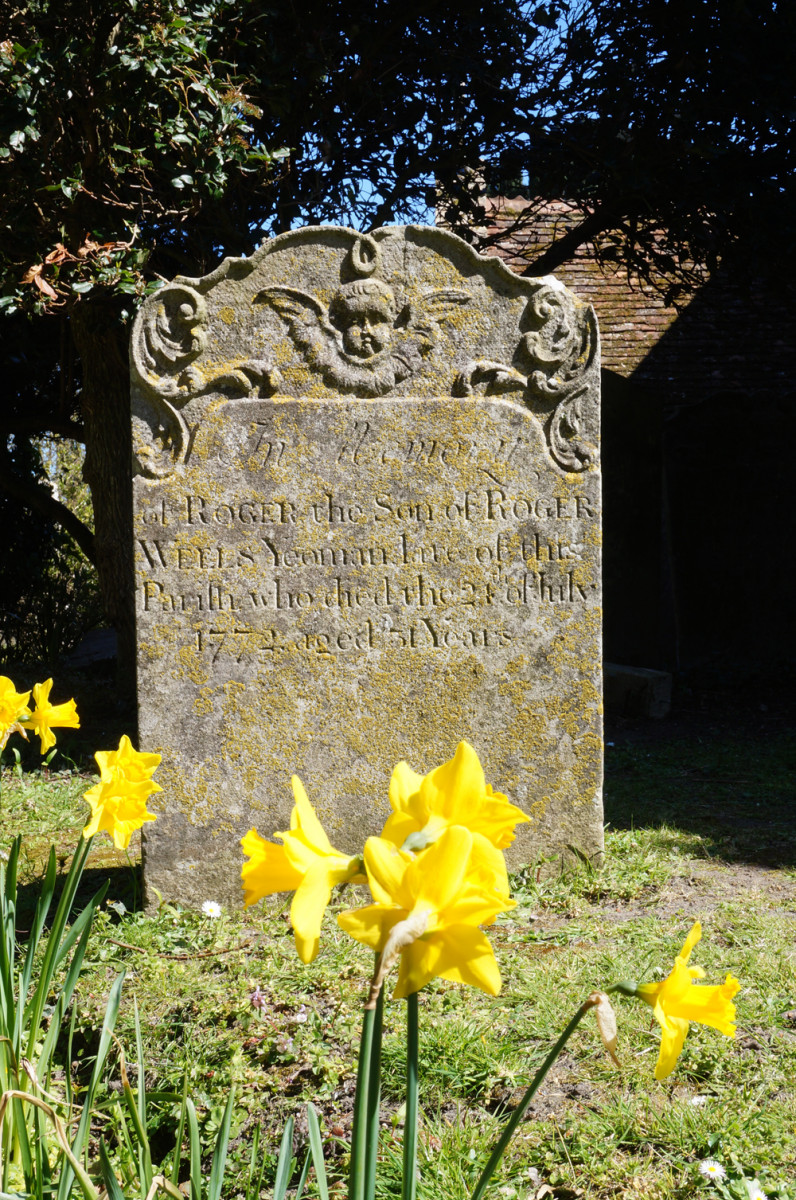
18th century headstone with a good growth of lichen at St Mary’s in Woodnesborough.
Further support and guidance
- Ancient Yew Group – advice and information about veteran (aged 500 years and over) and ancient (aged 800 years and over) yew trees. The site includes a gazetteer of ancient and veteran yews in the Diocese of Canterbury.
- Bat Conservation Trust – advice and guidance on bats. The Trust also runs a helpline, which can be contacted on 0345 1300 228.
- Bats in Churches - detailed guidance on where you stand with the law and how to plan work in your church if bats are present from the Church Buildings Council, the national advisory body on church buildings.
- Biodiversity in Churchyards – detailed guidance on what it means and how to promote it from the Church Buildings Council, the national advisory body on church buildings.
- British Lichen Society – an organisation which promotes the study and conservation of lichens and has been working on a national survey of churchyards
- Building Friends – a toolkit to assist any parish thinking of setting up a friends’ group.
- Caring for Gods Acre – a charity which supports and encourages the maintenance of graveyards as wildlife habitats
- Kent Reptile & Amphibian Group – a voluntary group which promotes the understanding of creatures such as grass snakes, slow worms, lizards, frogs, toads and newts
- Kent Bat Group – a voluntary group supporting the conservation and understanding of bats and their habitats
- Natural England – the government’s advisory body on the natural environment
- The Conservation Volunteers – an umbrella organisation that brings together volunteers to work on maintaining and enhancing the natural environment. Members of the Conservation Volunteers carried out the Kent Heritage Trees Project.
- Trees in churchyards – guidance on their care and the permissions involved in carrying out works to them from the Church Buildings Council, the national advisory body on church buildings
- Wildlife and Countryside Act 1981 – the legislature by which certain species are protected in law